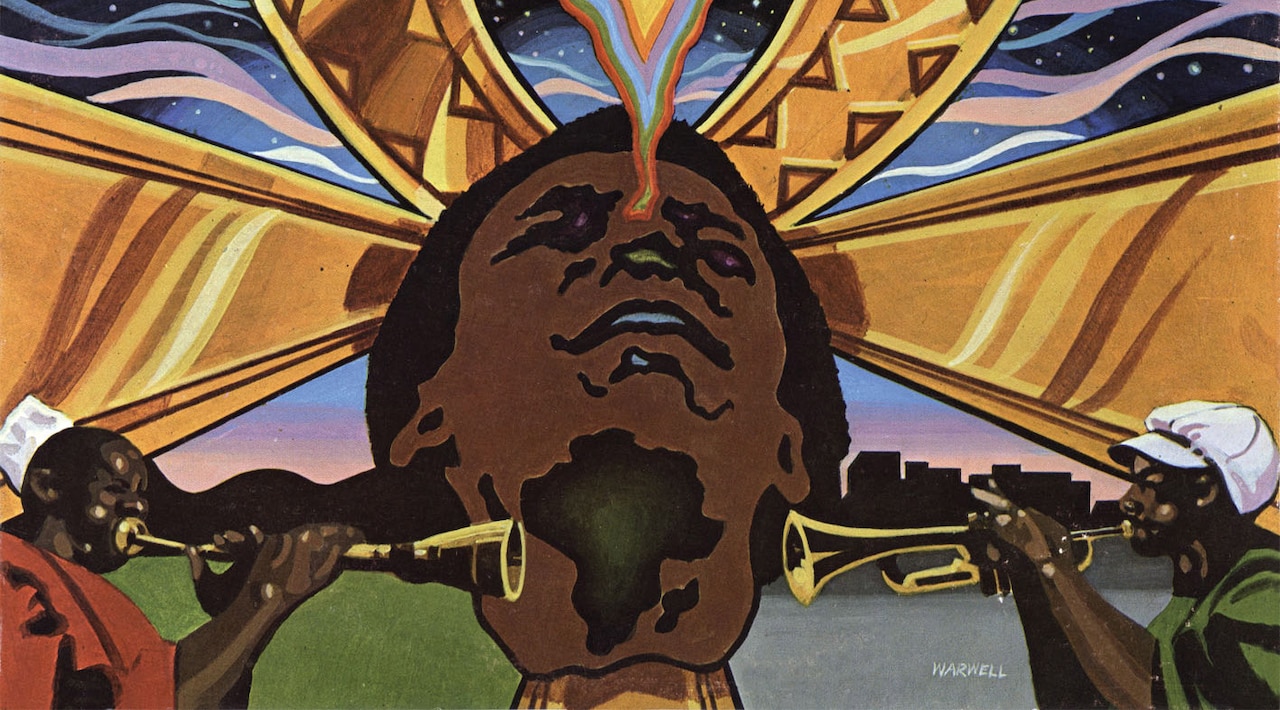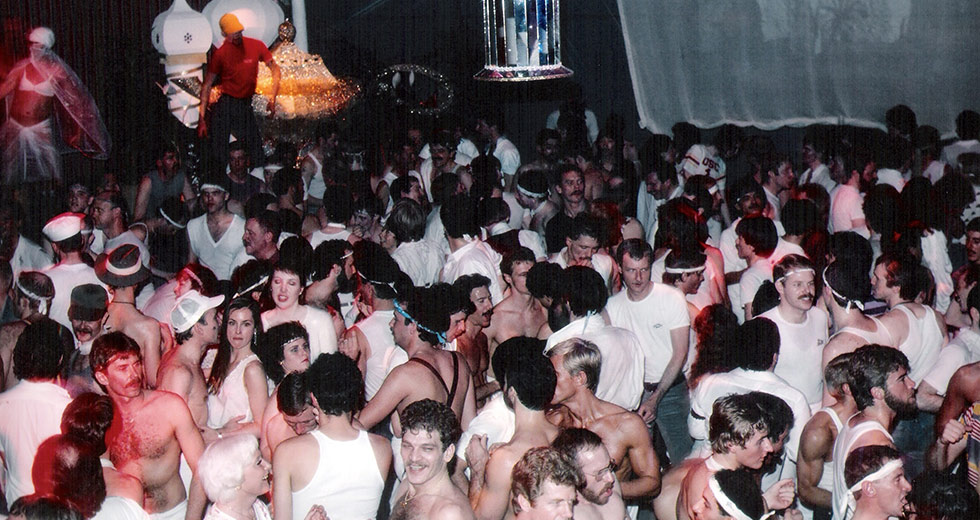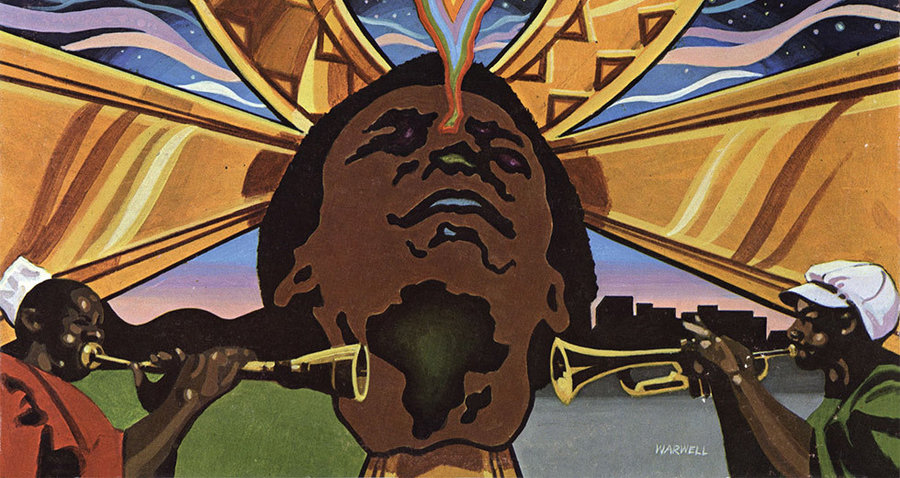A Guide to Muse Records

Muse Records was one of the most prolific and now collectable of all the post-’60s US jazz labels. But you will find very little written about it. Apart from a BBE compilation in 1997, there have been no retrospectives to put the label in its true context. But with its serious cover art, sharp label design, and hip aesthetic that matched the depth of its output, Muse deserves its place in jazz history somewhere between Blue Note, CTI and Strata-East.
Set up by Joe Fields in the early 1970s, the label was as fertile as it was diverse, releasing well over 200 albums in that decade alone – from soul jazz and hard bop to Latin and fusion. James Moody, Sonny Stitt, Grant Green and Chick Corea were some of the big names to record for Muse. But equally great releases came from little known players like Neal Creque and the band Catalyst. And through a deluge of LPs at their creative peak, artists like Mark Murphy and Carlos Garnett became as associated with Muse as Pharoah Sanders and John Coltrane had been at Impulse a few years before.
Joe Fields started his career in the music industry at Columbia Records in the 1950s. “I was a salesman on the street,” he says. “I carried a bag and went from record store to record store. Brooklyn was my territory. It was perfect for me because I grew up there and I knew the whole neighbourhood. So the Columbia thing worked very well.” After moving to London Records, he spent five years at Verve in the 1960s. This was during the Creed Taylor era and Fields was working on recordings by the likes of Jimmy Smith. “I was on the road all the time. I used to travel for 40 weeks of the year so only occasionally got into the office,” he says. “Creed was an extraordinary producer and a wonderful guy. He always used to pick my brain and ask ‘what’s happening out there’. So I was there with my finger on the pulse and I really got to know the music business.”
From working as Head of Sales at Verve he moved to Prestige where he worked for Bob Weinstock for five years. “Bob was a guy who was really into the music and was really early onto the scene. You know he had Miles and all those people really early on. I saw how he ran his organisation and in the back of my mind I thought if he can do it so can I.” He also spent a year at Sue Records working for Juggy Murray with artists like Jimmy McGriff, Ray Bryant and Ike & Tina Turner. It was there he got to know Neil Bogart (future founder of Casablanca Records), who invited Joe to join him at Buddah Records. Despite success with a number of pop and R&B acts, Fields great love was jazz, and he was soon to be given the chance to set up his own label. “I was there with Neil at Buddah for five years and we had become a real hit making machine. But he was working with a lot of the Melanie’s and all that bubble-gum type of music. So I offered to set up a jazz label.”
With the help of Prestige producer Don Schlitten he set up the Cobblestone label as a subsidiary of Buddah. “In the back of my mind, what I wanted to do was start a jazz label,” he told Downbeat. However, Cobblestone’s early 7-inch ranged from the psychedelic rock of The Countdown Five to the R&B of Doris White. But its first two LPs were a sign of things to come, with the soul jazz of Comin’ Home by The Joe Thomas Group and the Brazilian improvisation of Hermeto Pascoal’s Hermeto. LPs followed by Norman Connors (Dance of Magic and Dark of Light) and future Muse artists such as Neil Creque (Contrast and Creque) and Harold Ousley (The Kid).
I rubbed two matchsticks together with no financing to get the label off the ground.
At the start of the ‘70s, Fields began to turn his mind to his own independent label to suit the times. “We had no money but over the years I had worked with distributors and labels throughout the country. So I had built up a lot of trust,” he says. “So when I had the idea for the label I was able to approach distributors in Chicago, in LA and so forth and say ‘look advance me the money and I guarantee you will get it back’. That’s how I got Muse started.”
The label’s early releases ranged from the hard bop of James Moody’s Never Again to the vocalese of Mark Murphy’s Bridging a Gap. The label also straddled the line between the commercial and the experimental. “I’m music-orientated but also sales-orientated,” says Fields. “If you are an ECM label and you are making ECM music, you are catering strictly for those people. But if you are Muse type label, you might do a Houston Person album that is in one direction and then do a Carlos Garnett that is way off into another direction. You can’t be all things to all people, but you can make everything of quality in its own particular groove. It was always important for me to find a balance and to cater to the many different tastes in jazz.”
One area the label was particularly strong on was its vocalists. “That was something I always had a great feel for and there were always great singers around me,” says Fields. “So early on with guys like Eddie Jefferson and Mark Murphy, and even Morgana King who wasn’t strictly a jazz singer but she was a great singer.”
Joe Fields is credited as producer and co-producer on some of his label’s most important releases, including LPs by Carlos Garnett and Dom Um Romão. “But let me put the role of the producer aspect of all this into some perspective here,” he says. “Most jazz artists are self-produced really. Woody Shaw produced Woody Shaw. Sonny Stitt produced Sonny Stitt. You didn’t tell those guys what to do. What could I tell David ‘Fathead’ Newman? Nothing. But what I would do was provide guidance to some of the younger guys and give them direction. That’s the aspect of producing I was involved in.”
Much of the stunning cover art and design was taken care of by Ron Warwell. This graphic designer, painter, and photographer deserves his place alongside Pete Turner at CTI and Reid Miles at Blue Note. “Ronny was a total jazz nut and a really talented guy,” says Fields. “He was very hip and very smart and did some really nice things for us. He used to do them all by hand. And most importantly he understood the music and made the art reflect the music.” Warwell’s Afrocentric painting for Carlos Garnett’s Cosmos Nucleus and the sublime photograph of Dom Um Romao for Spirit Of The Times (Espirito Du Tempo) are just two examples of the depth of his creativity. Another regular designer for Muse was Hal Wilson, creating sharp fonts for Valley Land by Walter Bishop Jr. and striking illustrations for Mark Murphy’s Sing.
What follows is a selection of Muse essentials.
Roy Brooks - The Free Slave
Recorded live at The Left Bank Jazz Society in Baltimore in April 1970, The Free Slave was a fierier offering from Brooks and his band, which included bassist Cecil McBee and tenorist George Coleman. You may recognize the name of the venue: It was the place where John Coltrane played his last ever gig. Writer Cathleen Carris described the crowd at The Left Bank that night: “There are professors from the Peabody Conservatory of Music, college students of all colors, members of the militant Black Panther organization, and middle-aged women dressed in their Sunday best.”
The intensity of the Roy Brooks’ session can be sensed by the hollers from that fervent crowd, as “The Free Slave” swings and soars for over 12 minutes. The other standout number is “Will Pan’s Walk.” In the mid-’70s, Brooks found an even more radical voice with the spiritual jazz of Roy Brooks & the Artistic Truth. A constant explorer of sound, Brooks became a renowned player of the musical saw and even created a melodic device that sucked air in and out of his drums.
Carlos Garnett - Black Love
Carlos Garnett got his break when he joined Freddie Hubbard’s band, appearing on the 1968 LP A Soul Experiment, which included two of his compositions. But his most important collaboration was with Norman Connors. Garnett appeared on the drummer’s first two Cobblestone LPs, Dance of Magic and Dark of Light. And Connor’s Buddah debut Slewfoot consolidated that partnership, opening with Garnett’s own composition “Mother of the Future,” a jazz dance monster featuring the vocals of Jean Carn.
The partnership would continue on Connors’ mid-’70s LPs for Buddah and Garnett’s for Muse. But while those are all great LPs of deep spiritual jazz, Carlos’ debut as a leader is perhaps the most essential. Produced by Garnett and Joe Fields, Black Love is best known for its alternative version of “Mother of the Future,” with vocals by Dee Dee Bridgwater. The list of players assembled for his debut included heavyweights like Mtume, Buster Williams, and Billy Hart. And the creative force on another of his jazz dance anthems, “Banks of the Nile,” is simply breathtaking. Garnett’s compositional dexterity was also on display on the radical jazz funk of “Black Love” and the spiralling ballad “Ebonesque.” The LP came in another great sleeve by Ron Warwell.
Eddie Jefferson - Still on the Planet
When asked if there was any precedent to the lyrical style of the Last Poets, the group’s Abiodun Oyewole replied: “Eddie Jefferson and Oscar Davis, those guys were rappers. They had rap insinuations, innuendos that I would have never have thought of.” Born in Pittsburgh in 1918, Jefferson is regarded as the Godfather of vocalese. Writing lyrics to match solos, he also introduced inventive messages about the song and the artists he was recording with like Coleman Hawkins, James Moody and Charlie Parker.
Jefferson recorded three LPs for Prestige at the end of the ’60s before being signed to Muse. His four LPs for the label included the 1976 outing Still on the Planet. Recorded at Blue Rock Studios, New York, the LP featured one of the best versions of “Chameleon.” “Zap! Carnivorous!,” meanwhile, is an urban blues that wouldn’t have been out of place on a Last Poets LP. In 1979 Jefferson was shot and killed outside a Detroit club where he was performing, making the sentiments of “Zap! Carnivorous!” even more salient.
Mark Murphy - Sings
Of all those to have been inspired by Eddie Jefferson, the New Yorker Murphy was the one to really push the boundaries of vocalese. Back in the ’60s Murphy recorded a host of LPs for labels like Capitol and Riverside before his Muse debut in 1973. Recorded at New York’s Basement Studios in 1975, the line-up for Mark Murphy Sings was comprised of many of the same players as his debut for Muse, including the Brecker Brothers and arranger Dave Matthews.
Hal Wilson’s beautiful sleeve illustration is suggestive of the album’s opener “On the Red Clay,” one of Murphy’s great vocal interpretations. As Michael Bourne’s sleeve notes put it: “‘Red Clay’ is a song about roots, which is what Freddie Hubbard was feeling composing it, which Mark Murphy envisioned in lyrics.” Murphy’s words and phrasing for “Naima” are also at one with the musical spirit of Coltrane’s composition. Other highlights include Herbie Hancock’s “Maiden Voyage” and “Cantaloupe Island,” but the LP is perhaps best known for Murphy’s ecstatic take on Milton Nascimento’s “Empty Face,” a track that eventually became an anthem at Dingwalls.
The Visitors… Earl & Carl Grubbs - Motherland
The Grubbs brothers received their musical grounding from John Coltrane (their cousin-in-law) and Eric Dolphy. “Eric once had us trying to figure out the changes of Tadd Dameron’s ‘On A Misty Night’ – it took us all afternoon,” recalled Earl. The results of their schooling can be heard on this tight but exploratory session. The LP consisted mainly of the brothers’ own compositions. “Fables of Africa” displays all the grace and fervour of their tutors’ finest work, built around an intuitive duet that the brothers put down to a mix of “competition and comradeship.” They provided a more strident duet on another Carl Grubbs composition “Kimball.” J C Thomas who penned the sleevenotes described it as “a modal march based on a Scottish reel.” With Victor Lewis on drums, John Lee on bass and Joe Bonner on piano, The Visitors made a formidable quintet. The sleeve was designed by Ron Warwell, whose Afrocentric painting chimed perfectly with the depth of the music.
Dom Um Romão - Dom Um Romão
The percussive fire of Dom’s skins made him a legend of the UK jazz dance scene, with anthems like “Shakin’ (Ginga Gingou).” That heavy slab of Batucada was taken from the 1975 LP Spirit Of The Times (Espirito Du Tempo), an album whose recording sessions also spawned Dom’s eponymous debut for Muse.
Produced by Dom and Joe Fields, the two LPs included a selection of heavyweight American and Brazilian players. But this was no exercise in overindulgent fusion. “Dom’s Tune” sets the tone. Drawing on his tenure with Weather Report, the loose but intuitive soloing creates an impressionistic canvas, full of space and suggestion. There’s something equally loose and freeform about “Cravo E Canela,” the Ronaldo Bastos composition made famous by his Clube Da Esquina colleagues Milton Nascimento and Lô Borges. The LP also includes a version of Sivuca’s “Adeus Maria Fulo,” but it is best known for “Braun-Blek-Blu,” a storming Batucada track that rivals “Ginga Gingou.”
Neal Creque - Neal Creque & The Hands Of Time
Born in the Virgin Islands, this jazz pianist and organist earned his spurs with Pucho & His Latin Soul Brothers in the late ’60s, and these Latin flavours were in full bloom by the time he had gathered his first ensemble together for Muse. The Hands of Time LP begins with the stone cold killer “What Am I Gonna Do,” a regular spin for DJs like Patrick Forge. This storming piece of Latin-infused jazz funk featured the vocals of Jackie Soul from Pucho & His Latin Soul Brothers. The other members to appear on the album include Wally Richardson and Bill Salter, regular players for the Prestige label. The other big track on the LP was “In the Middle of It All” a moody piece of cosmic jazz featuring the towering vocals of Ann Williams. Like Williams who slipped away into obscurity, Creque never reached his rightful audience and this would be his last ever LP.
Dave Pike - Let The Minstrels Play On
In his early career as a leader, vibraphone player Dave Pike went between soul jazz and easy listening and far more exploratory records like 1970’s Doors of Perception and his LPs for the MPS label. His first LP for Muse – Times Out of Mind – was a fairly straight-ahead session. But 1980’s Let The Minstrels Play On – especially the heavy fusion of “Swan Lake” – is the equal to any of his MPS recordings.
The other big track off the LP was originally composed and recorded by guitarist Ron Escheté (who provided guitar on “Swan Lake.”) Pike’s version of the title track opens his 1980 LP and features the Latin scatting of Carol Escheté and some serious interplay between Pike’s vibes and Escheté’s guitar.
Catalyst - A Tear and a Smile
As a 1999 compilation put it, Catalyst were “the funkiest band you never heard.” And their Muse LPs could well have been the funkiest the label ever released. Their final and greatest album is A Tear and a Smile. The LP opens with the appropriately entitled “The Demon.” The menacing moog of Eddie Green creates a foundation for the fiery saxophone of Odean Pope, before spiralling into a free piece of fusion. The soothing Rhodes licks of “A Tear and a Smile” introduces one of the most beautiful recordings to come out of Muse, courtesy of the meditative alto flute of Odean Pope. And, just when you think it can’t get any deeper, the epic that is “Suite for Albeniz” begins its Arabesque journey. An incredible piece of work.

